Has the future of work been predicted in science fiction films?
Jun 19, 2020
9 mins
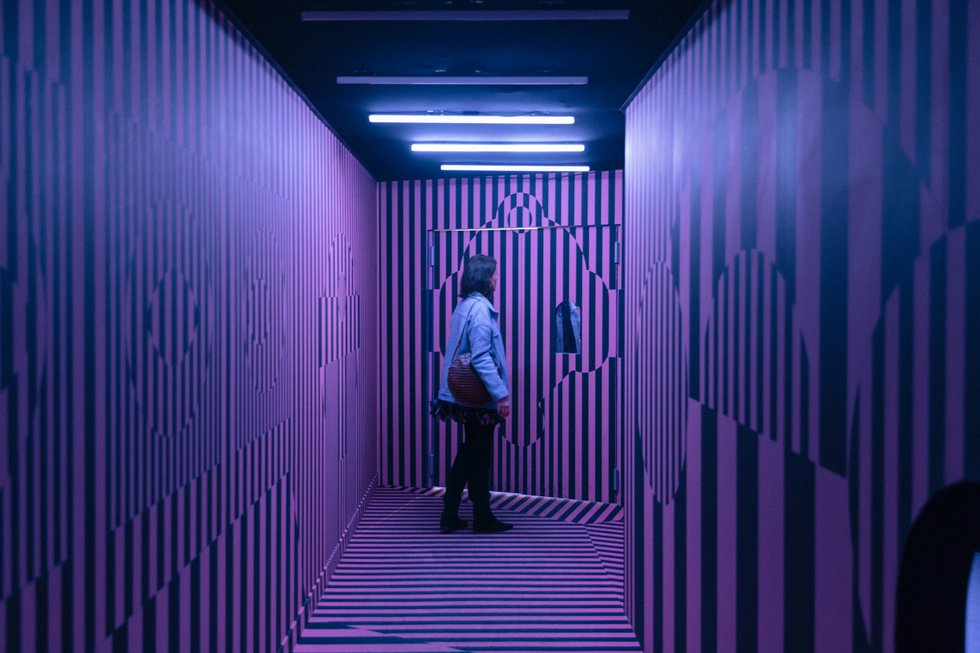
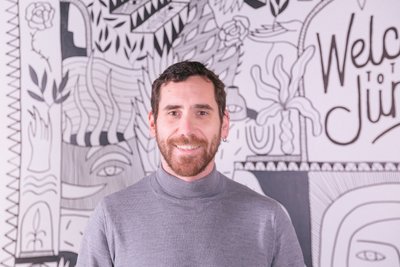
Journaliste - Welcome to the Jungle
What is work going to be like in the future? This problem has eaten away at societies for decades, and now more than ever. Everything was turned upside-down a few months ago. Open-plan offices are being rethought—in fact, the very notion of “the office” is being called into question. Relationships between colleagues will suffer from this epidemic, which is keeping us apart.
Film-makers have been questioning the future of work for a long time. Tomorrow, the day after tomorrow, what will the world of work look like? Alienating, highly selective, disappearing… in films, the future of work is far from happy. Science fiction movies, all linked to each other by their influences—Orwell and Asimov especially—have anticipated what the future will be like for workers.
Spoiler alert: it will be dull, monochrome, strictly monitored, and elitist. It will exclude people and drive them crazy. Now back to a few on-screen basics.
Overwhelmed by paperwork: Brazil
A man’s got a boiler-room problem. The air conditioning’s on the blink. He’s hot as hell. In his small, retro futuristic-looking apartment, he can barely breathe. He calls a specialist company and reports the emergency to a cheerily mechanical operator, with a voice as malicious as it is suspicious. The client won’t have time to sweat anyway: within a few minutes, he’s taken hostage by a crazy mustachioed heating engineer, equipped like a seasoned member of a SWAT team. He should’ve signed the right paper before the intervention, but too bad for him. In the rush, there wasn’t time. “Damn paperwork,” says the overexcited technician. “You can’t make a movie without filling out the form.”
The rebellious worker is Robert De Niro; the guy in the wet pajamas, Jonathan Pryce. The film is Brazil, a whimsical hybrid beast, a cross between Monty Python and George Orwell. Directed in 1985 by Terry Gilliam—a former member of the Monty Python troupe—this dystopia is a totalitarian world obsessed with performance and productivity.
Sam Lowry, the bewildered man with the exploding pipes, is an unambitious civil servant in a suit as grey as his complexion, the efficient assistant in an underground archive. His mother, who swears by cosmetic surgery, blames him for not taking on responsibility and pushes him to accept a promotion he doesn’t want. Truth be told, all that interests him are the dreams he has at night: he is a winged knight who fights giant babies before flying off into a background of pink clouds to save an imaginary woman. A breath of fresh air in a daily life packed with spreadsheets with endless numbers, insane protocols, and official stamps upon other stamps. Sam’s work universe is a gigantic labyrinth trying to pass itself off as a marvel of technology. Everything is grey and rusty, the machines are dripping wet, there are the sounds of alien typewriter keyboards and an ant hill that looks like something from a cult. And the slightest little bug has disastrous consequences.
This is the starting point of the film: an insect, a tiny bug, slips into a printer and everything collapses, but nobody cares, except Sam. Like when a cheque (they still exist in some visions of the future, yes) gets lost in the post and everyone plays the blame game with each other: a proper game of table tennis, but one that lasts several days. While trying to solve the problem, Sam will meet the woman of his dreams, every night. Winning her over, rescuing her—at least trying to do so—will allow him to see the folly of the system he used to indulge in so apathetically. So much so that she might be the one who will free him from the misery of work, and will fight against a universe in which every office looks exactly like a prison cell.
Ironically, De Niro’s character, the rambunctious heating engineer, a fugitive from demolition, will be attacked by a whole pile of documents, swallowed up by the bureaucratic machine. Just as, here at home, in our time, there is always an improperly filled-out form, a box that didn’t get ticked, a missing part of the file, and boom! Return to sender. We may not be in Brazil, but sometimes it feels that way.
In Gilliam’s film, everything about work is weird, frantic, delirious, and exaggerated. The poetry of the imagination contrasts with the darkness of the world: when Sam escapes from his gloomy, everyday professional life, everything becomes grandiloquent, magical, colorful, and joyful. What if all this is just a crazy dream, just some damn hallucination? Has Sam gone crazy? He probably has. Brazil is the cult classic fable that calls out work as a set of systems, cogs, or gears; irrational, frenetic, rusty mechanisms that make people paranoid and crazy. But Brazil, like most sci-fi films, would not have been much of a success—for a large part of its set design, at least—without Fritz Lang’s 1927 film Metropolis. It’s the foundation of world cinema in many ways: adventure and suspense in both its subject matter—with its controversial and questionable morals due to Lang’s wife’s later affiliation with the Nazi party—and its film-making.
Class struggle and the giant elevator: Metropolis, Total Recall and THX-1138
High above lie the powerful, indulging in luxury and idleness. Down below, there are the poor, the scum, the mistreated workers toiling away night and day, hunched over, running a monstrous, gargantuan machine that allows the wealthy up above to take it easy. Beyond the metaphor of superiority, space is specifically organized in this way: upper city, lower city. Besides, the boss’s office is always on the top floor, isn’t it?
Metropolis is all about class warfare. Workers are alienated by their mission as slaves and form a shapeless mass. An industrialist runs the city, monitoring and exploiting them. With repetitive gestures and uniforms, they are nevertheless essential to this world that will collapse when they revolt at the call of an android created by a mad scientist. This vision of work as a wearying task, imposed until the point of exhaustion, will inspire many creators. First, Charlie Chaplin with Modern Times a few years later in 1936, which contains the scene with the hands on a giant clock that recalls the one in Metropolis. The work thought up by the “brains” for the little “hands” is merely a set of cogs, gears, and mechanisms that must be kept turning all the time. In the lower city of Metropolis, day-shift workers replace completely exhausted night workers. The machine never stops: the work is constant, exhausting, inhuman. The workers gather in groups in giant elevators that lead to the central machine, the heart of the entire city.
This idea of a massive lift inspired many films before finding its way into the 2012 remake of Total Recall. In this film, rougher and less fun than the Schwarzenegger original, only two places at either end of the Earth are habitable. Exploited workers live on one side of the planet but work on the other. These commuters of the future—workers living in the suburbs who make long daily commutes—take what looks like a monumentally giant elevator that crosses the heart of the planet to get to work.
The alienated working class is also at the heart of THX-1138, George Lucas’s 1971 sci-fi masterpiece. In the 25th century, everyone works for an invisible totalitarian power run by a caste that controls everything. They live underground, high on a drug, the “product”, which they are forced to take. Sex is forbidden. They have to take the sedative or risk prison, and nobody knows who they work for or why. Until THX-1138, a worker in a police robot factory, stops taking the drug upon the insistence of his girlfriend. He then flees with her, trapped by a repressive machine that will continue to chase them.
Here, again, work is a prison that must be escaped. However, THX-1138 is famous for its use of monochrome. Everything is white in this universe conditioned by mindless tasks, much like in Brazil, where everything work-related is grey. Work, as the creators see it in the future, has no nuance. It is monotonous, nothing is bright. Workers are nothing but a shapeless mass subdued by an abstract power, getting broken down by an illusory mission. Kind of like the faces on the Tube in the morning?
Discrimination though DNA: Gattaca
An omnipresent color is also part of the concept of Andrew Niccol’s first film, the fantastic 1998 movie Gattaca. What was rusty and noisy in Brazil is now, in Gattaca, smooth, shiny, and new. Anything related to the theme of work is shown through shades of blue. It’s now possible, for those with means, to construct the genetic heritage of their unborn child. People have the ability to remove any predisposition to disease: depression, addiction, obesity, and so on. Everything is carefully chosen and pre-selected through controlled circumstances. The world is divided between the invalids and the valids; the natural children, and the others, genetically modified organisms. Companies test DNA. Work—at least in high-level positions, considered to be noble—is reserved for those who are exceptional in every way. It’s for those with higher IQs, a perfect design… in short, those who have an ideal genetic makeup, and a tendency to obey this elitist, performance-obsessed model. Forced elitism is a given.
Vincent is a natural child who dreams of working at Gattaca, a space research center and going into space. But his imperfect status prevents him from even entering the institution. Jerome, meanwhile, is endowed with a perfect genetic inheritance, but after an accident ruins his life and forces him into a wheelchair, he can no longer be considered valid. He then helps Vincent get what he wants and lives his life by proxy. He lends Vincent samples of his urine, blood, and hair so that the natural child can pretend to be him. That is until an FBI investigation of an alleged murder in Gattaca destabilizes the delicate balance between the two false brothers.
Gattaca is based on a sci-fi view of work that encapsulates our current fears: a selection process based on skills inequalities and discrimination, which has been becoming increasingly pronounced for a long time. Today, there are those who have a foreign-sounding name, who are discriminated against because of their skin color, who come from rough neighbourhoods. There are those who have a more chaotic, less straightforward background, who have not had the means to train in all the software, to have learned all these languages, those who haven’t had access to the right equipment. Tomorrow, there will be those who are perfect in the strict sense of the word and the others, who will be left with the crumbs.
By using genetics to comment on work, the film directly associates identity with professional activity: I do the work that the blood flowing through my veins lets me do. I do what I am. Not what I could become. The possibility of social mobility has disappeared.
Torture: Trepalium and Downsizing
The mini-series Trepalium also takes the far-too-close link between work and identity and pushes it to its limit. In the very near future, 80% of the population will be unemployed. Some 20% of privileged people work for a single, omnipotent company. A large wall separates the two groups. The unemployed live in ruins and fight every day to survive in increasingly precarious conditions. Those who work fight to the point of killing each other to keep their jobs, for which no details are given, other than the name of the employer, to emphasize the absurdity of all the tasks and protocols.
To calm the revolt growing on the poverty-stricken side of the wall, the Ministry of Labour launches a program of solidarity-based jobs. Some of the unemployed will be able to cross the wall—a resistance is being organized.
The power of the TV show is in demonstrating the suffering on both sides of the wall. Work is a source of angst and oppression for those who have it, but also for those who don’t. A trepalium is an instrument of torture. Its meaning comes from the Latin root of the word, work. The title sets the stage. In the city, workers’ faces are inexpressive. Their outfits all look the same, as do their homes. The offices all look the same, just like the labyrinths the workers take to get there. The violence of the corporate world is called out, as is the ostracism of the unemployed. This is seen when one of the protagonists, upon discovering the corpse of his boss, instantaneously and coldly offers up his services as a successor.
The series picks up the codes of a sanitised universe like that of Gattaca, of a dull world like the one in Brazil, of a class struggle like in Metropolis. It questions the place of work in our society and the way in which it goes so far as to define our identity—I am what I do—creating the links between identity and work highlighted in the aforementioned examples. Here, work also alienates, but above all it has disappeared and become a rarefied thing, in the worst possible way. Nothing evolves, everyone is paralyzed by mass surveillance, by the demands of productivity, and by misery at every level. Work is torture for those who have it as much as it is for those who don’t.
Work, passion, vehicle for social bonding, fulfillment, a damned ball and chain, a venerated kidnapper… Sacred. An exceptional character for any work that tries to predict the future. In the bittersweet 2017 comedy Downsizing, directed by Alexander Payne and starring Matt Damon, work can also end, but on a voluntary basis. A process has been developed which can shrink people, and thus the amount they consume. They are then sent to a world scaled to their size where working is no longer necessary! Except that Damon’s character, Paul, ends up there without his wife and gets bored; so much so that he ends up taking a job as a telemarketer.
Meanwhile, the excellent series Real Humans is set in a small town in Sweden. Humanoid robots help humans with menial tasks at home and in the factory. This is a thought-provoking commentary on the automation of society that addresses the themes of work, discrimination, and morality. Ultimately, it would be easy to draw up a long list of post-apocalyptic, Mad Max-style works of science fiction in which the only worthwhile work is survival!
So maybe it’s not so bad after all, working from home on your little computer, set up between the fridge and the kitchen bin?
Translated by Kalin Linsberg
Photo: Welcome to the Jungle
Follow Welcome to the Jungle on Facebook, LinkedIn, and Instagram, and subscribe to our newsletter to get our latest articles every day!

More inspiration: Future of Work
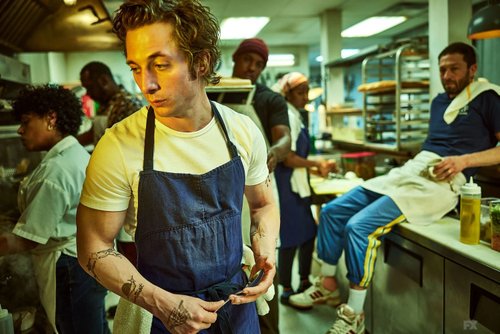
The Bear: When professional passion turns toxic
Carmy's workplace trauma isn't unique...
Dec 31, 2024
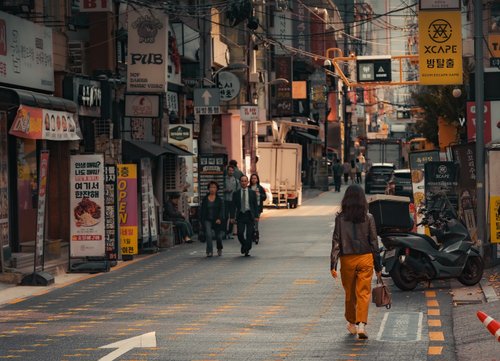
The youth have spoken: South Korea’s push for a four-day workweek
Is this the end of Korean hustle culture?
Dec 26, 2024
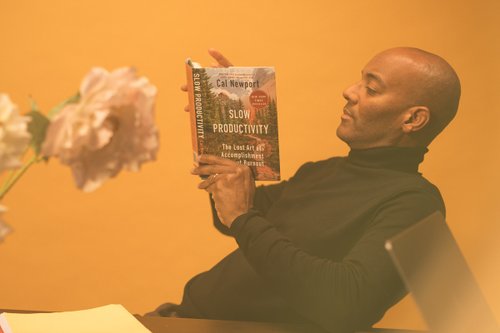
Cal Newport's Slow Productivity: Redefining success in a hustle culture
Is slowing down the key to achieving more?
Dec 19, 2024
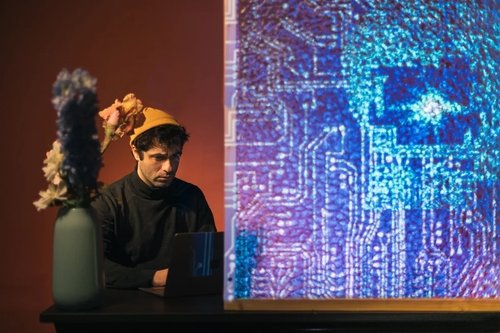
Wellbeing washing: Are workplace mental health apps doing more harm than good?
Workers are struggling with mental health. Are employers approaching it the right way?
Dec 19, 2024

Dark side of DINKs: Working as a childfree adult
Having children comes with challenges. So does choosing not to.
Dec 11, 2024
Inside the jungle: The HR newsletter
Studies, events, expert analysis, and solutions—every two weeks in your inbox

